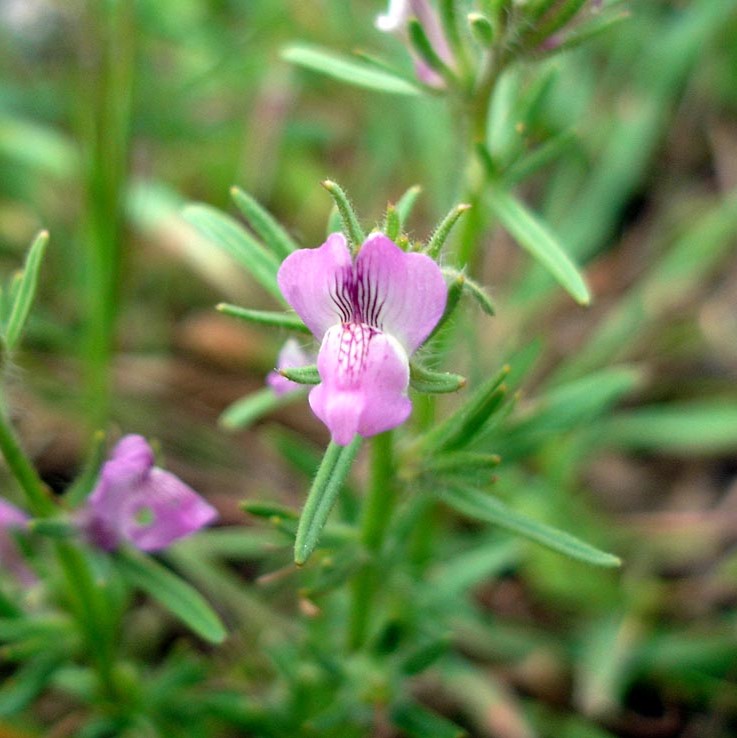Misopates orontium
Overview
| Genus | Misopates |
| Species | orontium |
| Common Name | Weasel's snout |
| Abbreviation | M. orontium |
| Ploidy | Diploid |
| Chromosome Number | 2n=2x=16 |
| Genome Size | 370 Mb |
| Genome Assemblies | 1 |
| Cross Reference | NCBI taxon: 102599 |
Organism Image

Description
Misopates orontium, known as weasel's snout, is a herbaceous annual plant in the family Plantaginaceae. It is a native of disturbed ground in Europe. It is also naturalised as a weed in other parts of the world such as North America. The pink flowers resemble a miniature snapdragon and are followed by a hairy green fruit which is said to resemble a weasel's snout.
Whole Genomes
Whole Genome Sequences & Annotations for Misopates orontium
S genes
Misopates orontium gwh_assembly S genes
| Query | Contig | Size(bp) | Coordinates | BLASTn Hit | BLASTn %ID | Domain |
| SLF30ψ | GWHDTUX00000037 | 14160301 | 11174324-11173131 | Antirrhinum hispanicum, S7-SLF30 | 93.6 | - |
| SLF10ψ | GWHDTUX00000037 | 14160301 | 11190716-11189622 | Antirrhinum hispanicum, S7-SLF10 | 88.7 | - |
| SLF15 | GWHDTUX00000037 | 14160301 | 11213107-11212004 | Antirrhinum hispanicum, S7-SLF15 | 78.8 | F-box domain |
| SLF13ψ | GWHDTUX00000037 | 14160301 | 11242062-11240910 | Antirrhinum hispanicum, S7-SLF13 | 90.5 | - |
| SLF3 | GWHDTUX00000037 | 14160301 | 11841578-11842880 | Antirrhinum hispanicum, S7-SLF3 | 92.3 | F-box domain |
| SLF2ψ | GWHDTUX00000037 | 14160301 | 11858112-11859222 | Antirrhinum hispanicum, S7-SLF2 | 92.0 | - |
| SLF18ψ | GWHDTUX00000166 | 26355828 | 21392261-21391126 | Antirrhinum hispanicum, S7-SLF18 | 92.3 | - |
| SLF8ψ | GWHDTUX00000166 | 26355828 | 21439783-21438597 | Antirrhinum hispanicum, S7-SLF8 | 93.0 | - |
| SLF9 | GWHDTUX00000166 | 26355828 | 21446224-21447399 | Antirrhinum hispanicum, S7-SLF9 | 92.8 | F-box domain |
Downloads
The Misopates orontium S gene sequences are available in FASTA format.
| CDS and Protein (FASTA file) | S-gene_Misopates_orontium |
Publications
Zhu S, Zhang Y, Copsy L, Han Q, Zheng D, Coen E, Xue Y. The Snapdragon Genomes Reveal the Evolutionary Dynamics of the S-Locus Supergene. Mol Biol Evol. 2023 Apr 4;40(4):msad080. https://doi.org/10.1093/molbev/msad080.